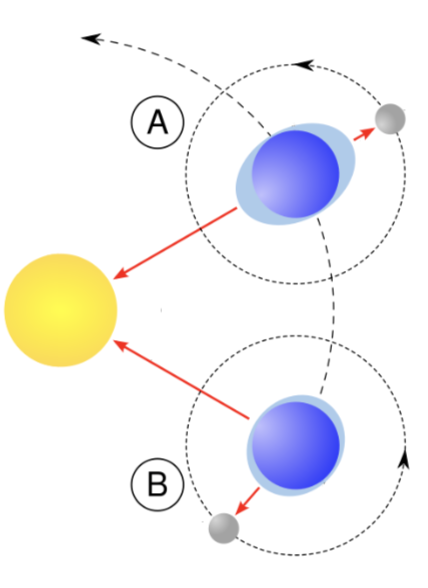Definitions #
Tide: daily oscillation of the sea whose level rises and falls alternately in the same place, caused by the attraction of the Moon and the Sun.
Flow or Float: rising tide.
Full tide: high tide.
Rising or ebb: falling tide.
Slack water: time when the sea level is stable. Slack water**: high tide, low tide.
Tidal coefficient: a quantity that indicates the relative importance of a tide. Expressed in hundredths.
Spring tides: tides with a high amplitude (coefficient higher than 70). The attraction of the Sun is combined with that of the Moon.
Dead waters: tides with low amplitude (coefficient lower than 70). The attractions of the Moon and the Sun are opposed.
Foreshore: land and beaches covered and uncovered by the tide.
Amplitude or tidal range: maximum amplitude between high and low water for a given tide. The foreshore corresponds to the area on which the tidal range of the highest known tide occurs.
SHOM: French Navy Hydrographic and Oceanographic Service. Official organization with authority in France for the edition of nautical charts and tidal directory.
Reference coefficients #
The reference coefficients are:
- C = 120 for the highest tide (maximum spring tide).
- C = 95 for the average spring tide
- C = 70 for medium tide.
- C = 45 for medium neap tide.
- C = 20 for the lowest known tide.
Tidal phenomenon #

Tidal phenomenon
The origin of tides is due to the deformation of the surface of the oceans as a result of the gravitational attractions of the sun and the moon.
The gravitational force depends on the mass and distance of the stars from each other. The moon, much less massive than the sun plays a role twice as important because much closer.
The coefficient depends on the distance of the sun and the moon from the Earth (the trajectories described are ellipses).
The rhythm of the tides is not 24h but shifted by 50 min because the lunar day is 24h50. During this period one attends 2 full tides and 2 low tides.
During a period of moon (29 days), one attends a complete cycle of 2 high tides and 2 low tides. The high tides occur at full moons and new moons.
Singular phenomena #

Influence of syzygy and quadrature
Depending on the relative position of the sun and moon to the Earth, their effects add or subtract.
Situation A is syzygy while situation B is quadrature.
Syzygy is the position of the stars such that their actions add up, i.e. an Earth-Moon-Sun alignment. This corresponds to the period of high water.
The quadrature is the position of the stars such that their actions cancel, that is to say an Earth-Moon-Sun set at right angle. This corresponds to the dead period.
